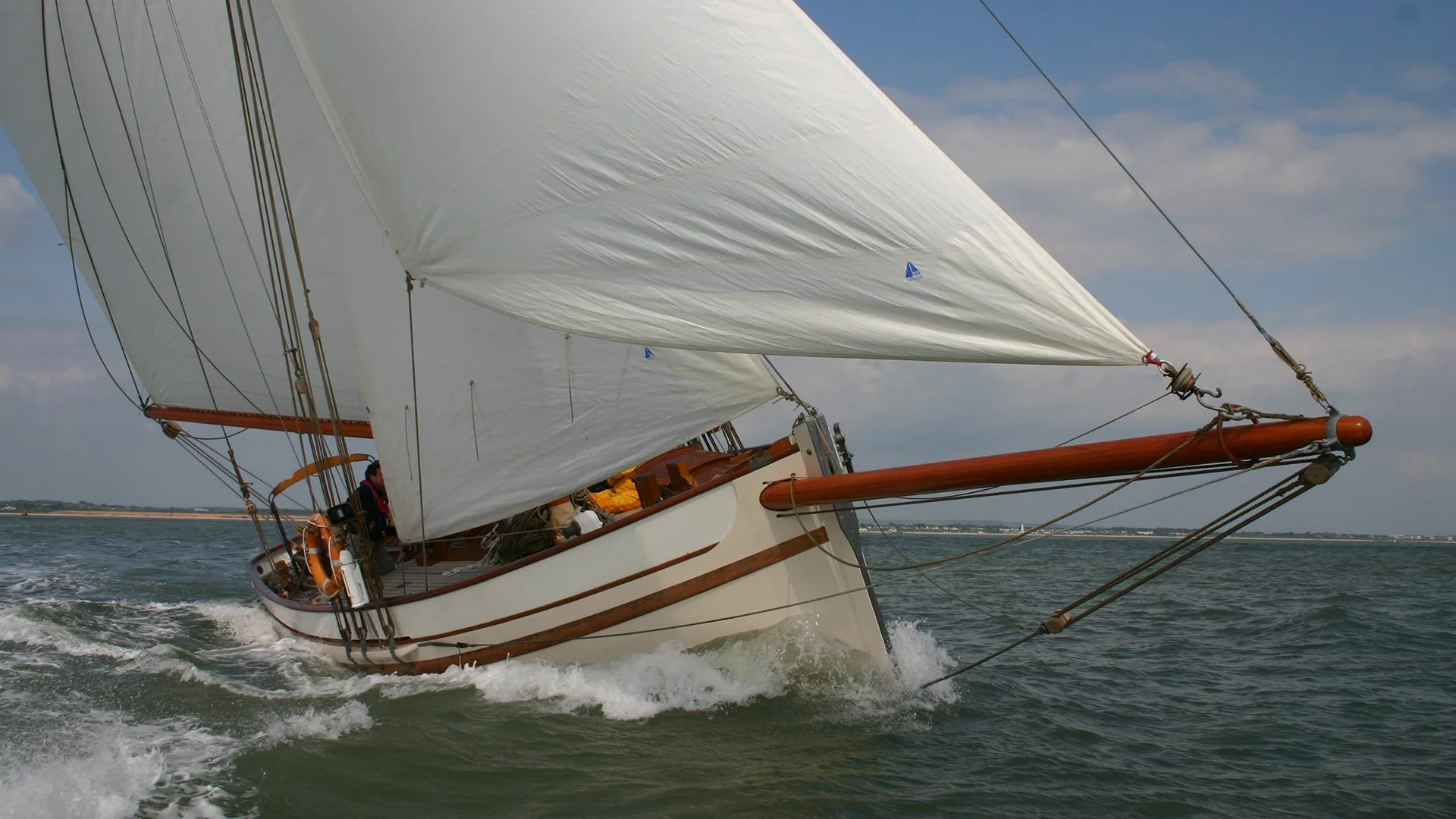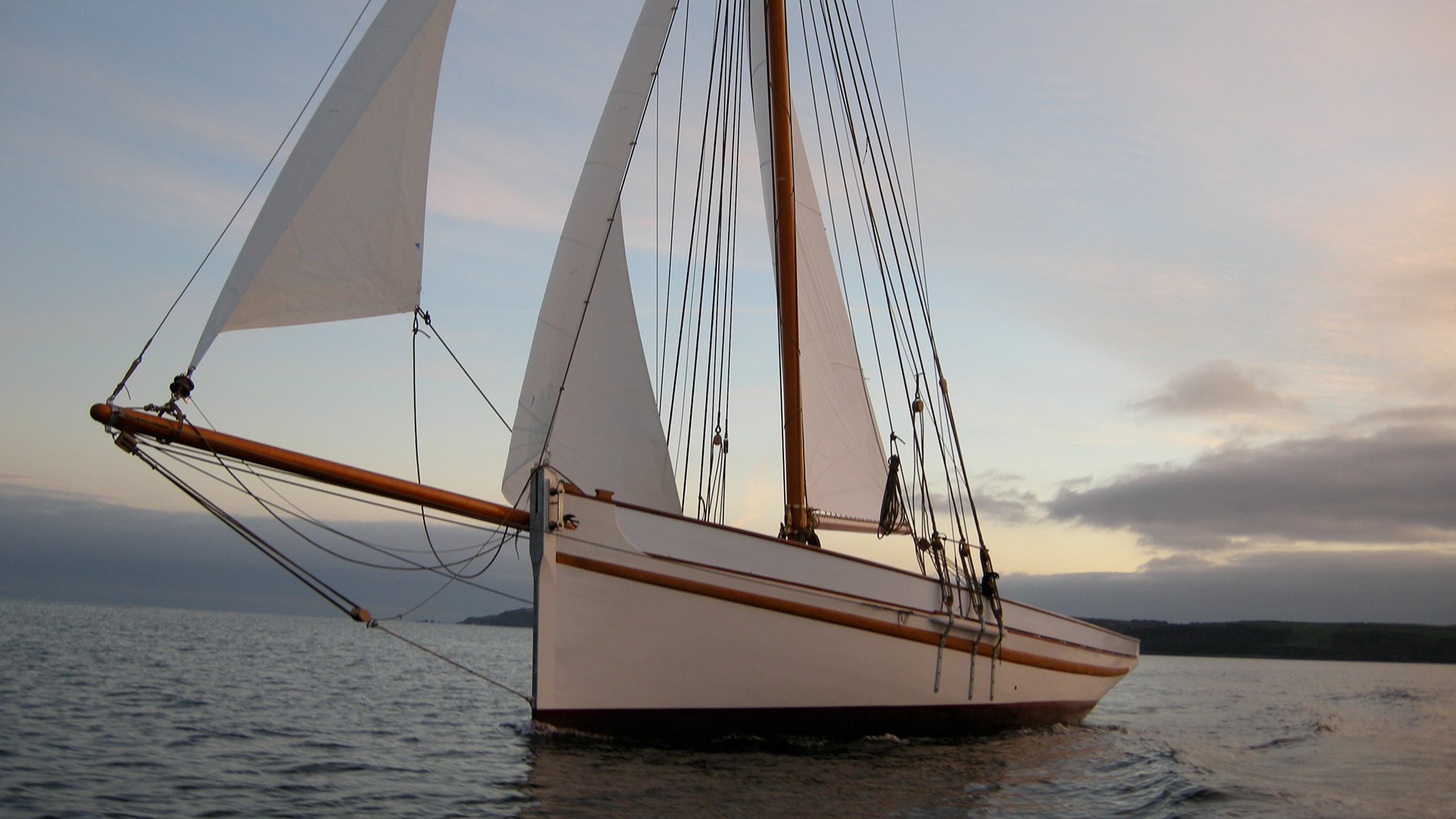Anti-Clockwise Gaffers
Earlier this month, off the south coast of England, “the Round the Island Race” celebrated its 92nd edition. The 50nm anti-clockwise circuit of the Isle of Wight has a had an interesting history starting in 1931. But very few of the past races would have clocked up the toll of damage and injury that occurred this year.
1100 boats started ranging from Maxis to V70’s to Open 60s, to TP52, right down to Contessas, Folkboats and South Coast One Designs.
There were 19 man-overboards
4 yachts capsized
There were 3 dismastings
There were 2 helicopter evacuations
178 boats did not finish
And more than 20 crew members ended up in hospital.
There’s plenty been written about that chaos, so I thought I’d tell about the four boats that finished in the “Gaff Rigged Division One”. They are from diverse eras, working boats and yachts, disparate designs and histories and all of them are very special in their own way.
The Winner of Gaff Rigged Division One was NOMAD
This boat first came to my attention before the turn of the century when I was dreaming of owning a wooden boat. She was built in 1997 to a design by the innovative pair of Nigel Irens & Ed Burnett. I distictly remeber pouring over the pages of “Classic Boat Magazine” wondering how I could possibly own a boat like this one someday. I managed to dig out my copy. (click the images above to read the 1998 “Classic Boat” article.)
Twenty five years since first reading about boat, I still feel there is something very “right” and yet very contemporary about her lines. When she was sold a few years ago the marketing spiel said
“NOMAD was built after many hours of discussion with Nigel Irens and Ed Burnett, the designers. The intention was to produce a seaworthy boat capable of sailing oceans in comfort and safety, which was beautiful at anchor, and welcomed at Classic Regattas worldwide.”
I think it’s time now time to acknowledge that they achieved their goal.
Second in Gaff Rigged Division One was KELPIE
On her 120th birthday, The 1903 Mylne design KELPIE enjoyed a breezy conditions completing the 50-mile course in 10 hours and winning the Shamrock Challenge Trophy for first gaffer over the line. She’s had a well documented and chequered history. In 1914, she was accused of carrying artillery to be used against the Irish Free State government and in the 1960s, she was sold to Newton Ferrers Sailing School and suffered a fire that destroyed most of her interior. After a thorough restoration by Fairlie in 2014 (including a new rudder, stem, and sternpost), KELPIE went on to win her class in several regattas, including the Channel regatta, Mahon, and St. Tropez.
Third in Gaff Rigged Division One was POLLY AGATHA
Some background from the best written brokerage site around and a great source of historical knowledge.
Cockwells the builders of POLLY AGATHA are very much traditional shipwrights with the skills, alongside advanced engineering and boat building techniques, were ideally qualified to be the creators of this bespoke Edwardian cutter. Thus use of modern as well as traditional materials has been optimised for the benefit of durability and to reduce the need for ongoing maintenance; thereby also achieving a classical look and feel with the benefits of modern advances in technology.
POLLY AGATHA was conceived as a replica of the pilot cutter PEGGY, built in 1904 by Rowles of Pill – and these Bristol Channel pilot cutters were developed to sail efficiently in one of the most difficult seaways in the world with its strong tides, narrow channels and short steep waves - as well as the blue waters of the Western Approaches. They would spend weeks at sea in all conditions waiting for work so they not only had to be faster than their competitors but also capable of withstanding all the storms the Atlantic Ocean could throw at them. Thus they were demonstrably very seaworthy – yet imbued with beautiful lines nonetheless. These cutters evolved with the fastest and strongest being replicated and improved upon - until by the early 1900s steam took over……………
“Yachting World” in August 2008 commented that “This new pilot cutter is a sheer delight to sail and deceptively fast to boot”. POLLY AGATHA is of such note that she has been accepted onto the National Register of Historic Ships.
Fourth in Gaff Rigged Division One was DUET
DUET was designed by Linton Hope and was built by White Bros of Southampton on the River Itchen in 1912 as Gaviota II for HR Pyne. From 1915 to 1926 she was owned by a German named Konsul Heinrich Bruns and kept in Kiel. In 1927 she returned to the UK under the ownership of JG Burroughs of Southend and was based in Burnham on Crouch. In 1931 she was bought by the adventurer Augustine Courtauld. August cruised her extensively around Europe, including time in Norway at the request of Naval Intelligence. His adventures are recorded in his autobiography 'Man the Ropes'. After Augustine died in 1959 she passed to his son, Christopher. In 1960 he became one of the founding members of the first Sail Training Organisation - the Ocean Youth Club. Christopher loaned Duet to the organisation, with her first youth trip starting on the 5th May 1961. In 1994, Duet was retired from OYC service and offered to the Cirdan Sailing Trust by the Courtauld family. Sixty two years after her first sail training trip she is still working full-time taking groups of young and disadvantaged people to sea.
At the back of my mind, I can’t help wondering how some of the big gaffers from New Zealand and Australia, might have gone. Imagine THELMA beating through the Needles of STORM BAY power reaching past the Bembridge Ledge!





















